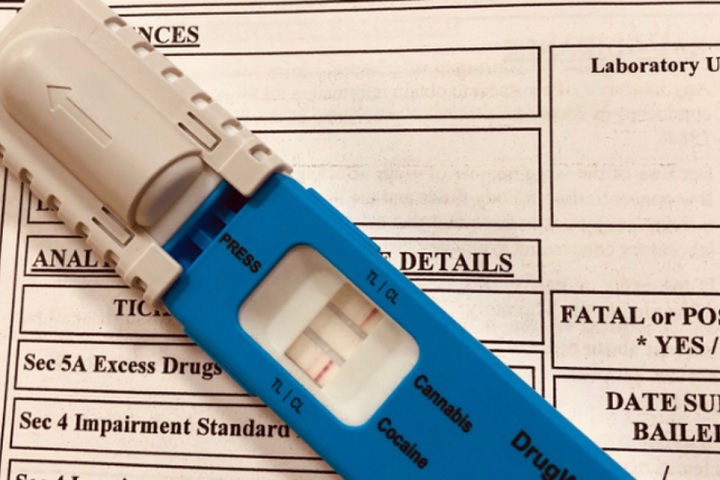
The Government is being urged to review the way that drug driving is tackled amid concerns that enforcement of the offence varies dramatically across the country.
A new report, published by the Parliamentary Advisory Council for Transport Safety (PACTS), highlights that while some police forces now have as many convictions for drug driving as drink driving, others are “rationed to a single test”.
Statistics show the highest number of convictions in 2019 were in the Metropolitan police area (1,093), followed by Merseyside (991) and Essex (784).
Conversely, the lowest numbers were in Warwickshire (56), Northamptonshire (61) and Bedfordshire (63).
The report says that high costs and delays with blood testing mean that some police forces are “rationing what should be a routine roadside test”.
It concludes that forces with better procedures, contracts and training are convicting ten times more drug drivers than others, when controlling for population size.
For example, there were more convictions for drug driving per 1,000 population in Merseyside (0.71) than in any other police force area. There were also more than 0.5 convictions per 1,000 population in North Wales, Dorset, Cleveland, and Norfolk.
On the other hand, there were significantly fewer convictions per 1,000 population in the West Midlands (0.06). Northumbria, Northamptonshire, Hertfordshire, Nottinghamshire, Leicestershire and Avon and Somerset also had less than 0.1 conviction per 1,000 population.
The report recommends the levels of drug driving enforcement should be increased in the UK, particularly in those police force areas where levels are low.
It also calls on the Home Office to review the blood testing process and seek ways to reduce costs and increase the efficiency of laboratory testing – through increasing capacity, improved procurement, or other means.
The Home Office should consider the possibility of reclaiming costs from those who are found guilty, the report says.
David Davies, executive director of PACTS, said: “The police have made big strides in catching drug drivers over the past five years. But it remains a postcode lottery.
“While some forces are testing hundreds of drivers, others are rationing patrols to a single test.
“These disparities cannot be explained by differences in drug driving and the danger it creates. A more consistent approach is badly needed, with all forces testing for drug driving where it is suspected.”
Reoffending ‘a major concern’
The report also looks at the issues of reoffending and drivers who combine alcohol and drugs.
It says that reoffending is ‘a major concern’ – with 44% of recorded offences being committed by reoffenders.
One person committed the offence ‘driving or attempting to drive with drug level above the specified limit’ when they had 18 previous drink- and drug-driving offences.
To address this issue, the report calls for a Drug Drive Rehabilitation Course and High Risk Offender Scheme to be introduced – modelled broadly on the existing drink drive programmes, but with better screening for drug and mental health problems and with clear pathways to treatment.
The report expresses concern that drivers who combine alcohol and drugs are likely to be significantly more impaired than those who consume only one. However, those who combine drink and drugs do not receive a longer sentence.
PACTS recommends introducing a new combined drink and drug driving, with a lower drink drive limit, that recognises the risk drivers who combine alcohol and drugs pose.
David Davies adds: “This report by PACTS shows we still lack answers to vital questions on drug driving. The number of offences and deaths detected so far may be only the tip of the iceberg.
“Driving under the influence of a combination of drink and drugs, even at relatively low levels, is particularly dangerous. This is not widely understood and there is no specific offence for drink and drug driving. This needs to change.”
> Conversely, the lowest numbers were in Warwickshire (56), Northamptonshire (61) and Bedfordshire (63).
Or on the other hand, it’s proving that in at least two of the three counties listed above, that the campaign is working?
Urban areas have different problems to rural areas, do not attempt to mix the two up.
David Weston, Newcastle upon Tyne
+2